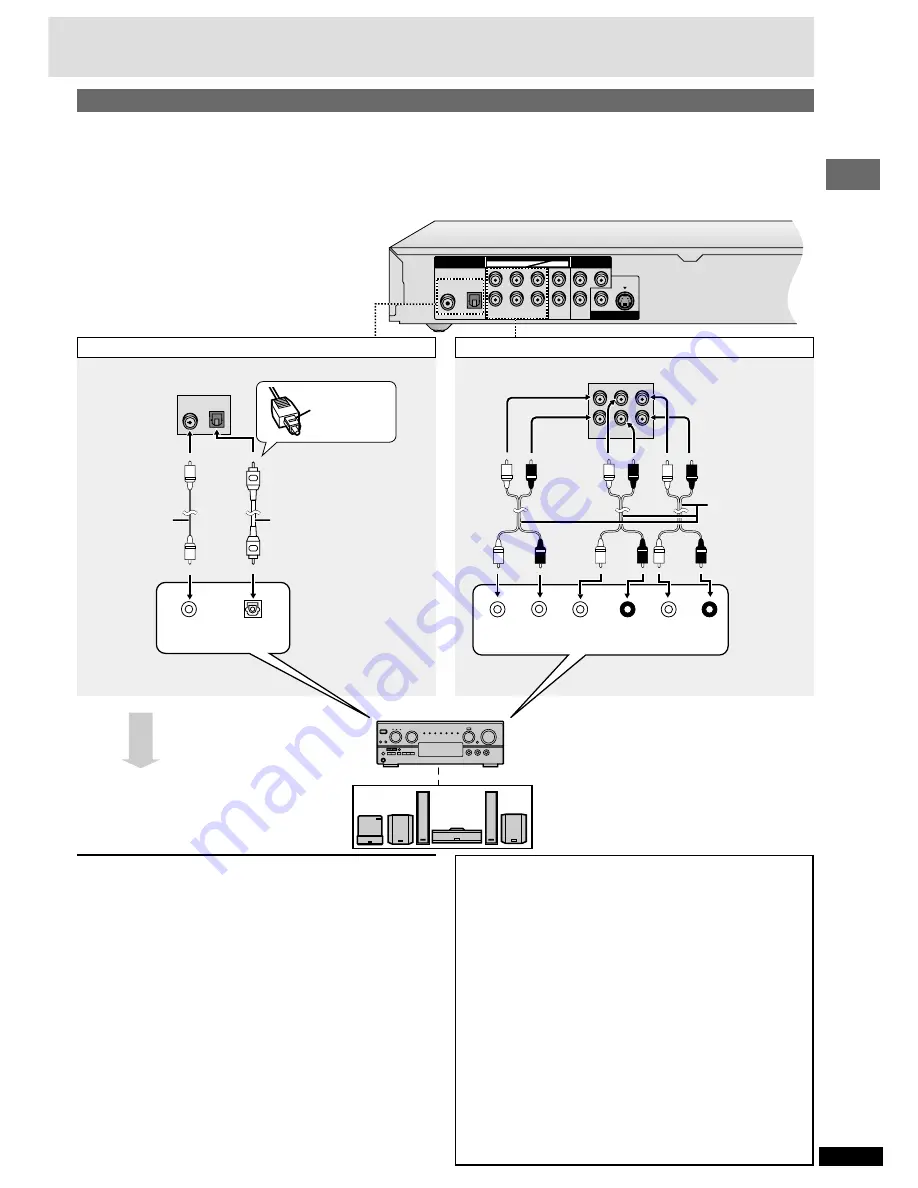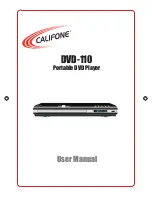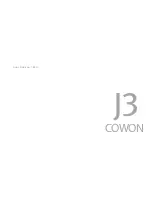
7
RQT6549
Getting started
DIGITAL AUDIO OUT
(PCM/BITSTREAM)
AUDIO OUT
VIDEO
OUT
S VIDEO
OUT
COMPONENT VIDEO OUT
(480P/480I)
OPTICAL
L
CENTER
Y
R
L
R
L
R
SUB-
WOOFER
SURROUND
FRONT
P
B
P
R
5 . 1 c h
2 c h
COAXIAL
CENTER SUB-
WOOFER
SURROUND
(L)
(R)
FRONT
(L)
(R)
OPTICAL
COAXIAL
CENTER
L
R
L
R
SUB-
WOOFER
SURROUND
FRONT
OPTICAL
COAXIAL
or
Home Theater—Enjoying more powerful sound
ª
B
Analog connection
ª
A
Digital connection
Coaxial cable
Optical digital audio cable
Do not bend sharply when
connecting.
Change “Digital output”
(
➡
page 23).
Change “Speaker setting”
(
➡
page 23).
Amplifier
Speakers (example)
Connect three or more speakers for surround sound.
[Note]
≥
If you don’t connect a subwoofer, it is advisable to connect front speakers
(L/R) capable of producing bass of less than 100 Hz.
≥
You cannot use DTS Digital Surround decoders not suited to DVD-Video.
∫
Recording
≥
Digital recording
(
➡
Connection
[A]
above)
You can record the digital signal directly to digital recording equipment.
[Note]
≥
With DVD, the following conditions must be met:
a
the disc doesn’t
have protection preventing digital recording, and
b
the recording
equipment can handle signals with a sampling frequency of 48 kHz.
≥
You cannot record WMA/MP3.
When recording DVDs, make the following settings.
– ADVANCED SURROUND: OFF (
➡
page 16)
– Digital Audio Output: On (RE-MASTER Off) (
➡
page 21)
– PCM Down Conversion: Yes
Dolby Digital/DTS Digital Surround/MPEG
§
: PCM
(
➡
page 23)
§
MPEG: for Australia and N.Z. only
≥
Analog recording
(
➡
Connection
[B]
above)
You can record to a cassette deck or other recording equipment.
There are no limitations on recording analog signals as there are with
digital signals.
Insert fully,
with this side
facing up.
You can connect to a
digital amplifier or system
component to enjoy stereo
or Dolby Pro Logic.
Connect cables
to terminals
corresponding to
the speakers you
have connected.
Enjoy the powerful movie theater and hall-like sound available with multiple channel audio found on DVDs by connecting an amplifier and speakers.
There are two types of connection, digital and analog.
[Note]
≥
The equipment connections described are examples.
≥
Peripheral equipment and optional cables sold separately
unless otherwise indicated.
≥
Before connection, turn off all equipment and read the
appropriate operating instructions.
[A]
Digital—Connect an amplifier with Dolby Digital and DTS decoders to
enjoy surround sound.
You can also enjoy high-quality stereo sound with sampling
frequencies of 88.2 and 96 kHz if the material isn’t copy-protected and
the equipment you connect is compatible with these signals.
[B]
Analog—Connect an amplifier with multi-channel audio input terminals
to enjoy surround sound.
This unit can decode Dolby Digital and DTS and there are no limitations
on sampling frequency with this kind of connection.








































